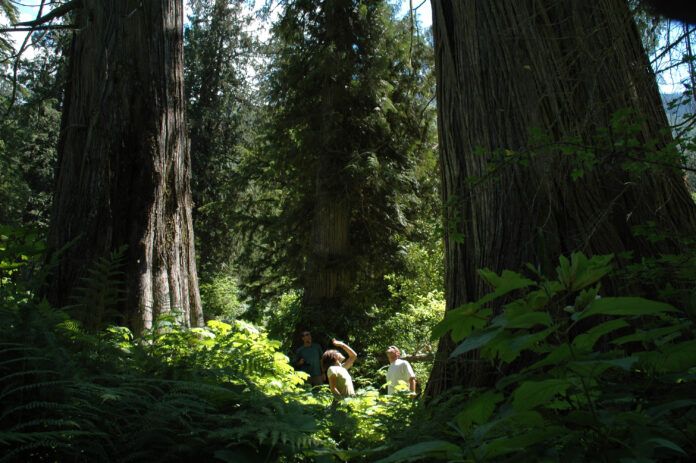Interfor will receive an unspecified sum under $4 million in exchange for giving up its tenure to the Incomappleux Valley.
The B.C. government announced Wednesday that a conservation area will be created to protect old-growth forest in the area northeast of Nakusp.
The Nature Conservancy of Canada raised $4 million to support the agreement, with funding from the federal government through Canada’s Nature Fund, as well as Teck Resources, the Wyss Foundation, the Wilburforce Foundation, and several individual donors.
The province said the funding was applied to “various aspects of the project, including but not limited to the buyout of the forest tenure.” The Nature Conservancy said due to a confidentiality agreement it can’t divulge the total that went to Interfor. The company declined an interview request.
But the payment rankles a director of the Valhalla Wilderness Society, which has long called for additional protection of the Incomappleux.
Craig Pettitt called it “very disturbing” the forestry company is being paid for a portion of their tree farm license that they had not accessed or logged since buying it out from Pope and Talbot. Following a 2005 landslide, the road into the area was closed and gated.
“We end up paying them for that piece of inoperable timber and to us who have worked in the conservation movement over the last 30 to 50 years, this sets an extremely bad precedent,” he said.
“It says to anybody in this province that if you’re trying to protect land that’s in forestry tenure, you’ve got to be prepared to buy them out with big money.”
Pettitt said the Forestry Act used to contain a clause whereby a company had to use their tenure or lose it.
“This company, since they bought out Pope and Talbot, hasn’t lifted a finger in that valley. I’m sure they’ve done an impact analysis and looked at the remaining timber and saw there wasn’t enough to pay for rebuilding the road and all of the bridges in substandard shape.”
Pettitt said the government provided the license but did not sell it so it should have the option to take it back.
“How is it we can give logging companies licenses but if we find there’s extremely high protection value then we have to buy that back? To me, that just doesn’t make sense.”
Pettitt said he is very happy to see the old-growth forest protected, as it is something that his organization has been working on for more than 20 years and was part of their their Selkirk mountain caribou park proposal.
However, the portion of the Incomappleux they included in their plan was much smaller than the 58,000 hectares that will form the new conservancy.
Pettitt said Valhalla’s proposal concentrated on including as much intact forest as possible while omitting clearcuts and rocky and icy areas, whereas the new conservancy will include two-thirds to three-quarters of the entire valley, including those non-forested areas.
He said that a lot of the valley bottom has been logged, but hasn’t yet been able to determine how much of the newly-protected area has already been clearcut.
Pettitt also said he would have been “far happier” if the area had been established as a Class A Park, the highest form of protection possible, rather than a conservancy, which “is a little looser in what is allowed.”
He said that while he would like to see public access to the area allowed, he is concerned that it would not come with proper oversight.
“If we aren’t going to have the oversight, it is perhaps better there be no public access. Ultimately not having access allows nature to continue unimpeded by human management.
“To see the big trees is very special, but these forests also can be trampled if too many people go in.”
He says fortunately for the Incomappleux, it’s far enough away and hard enough to get to that it probably doesn’t risk that kind of destruction.
But he also notes other opportunities exist on a smaller scale for people to experience ancient trees, such as the John Fenger Trail in the Lardeau Valley.
Meanwhile, Eddy Petryshen of Wildsight was less hesitant to praise this week’s announcement, saying they were celebrating the conservancy’s creation.
“We hope this marks a turning point for the trajectory of the inland temperate rainforest,” he said. “The Incomappleux Conservancy is an incredible step forward in protecting the irreplaceable old growth forests.”
He hoped the announcement would be the first step in protecting other areas, including the neighbouring Westfall River.
Some cedar trees in the Incomappleux are estimated to be 1,800 years old. It’s also home to many species of lichens.






